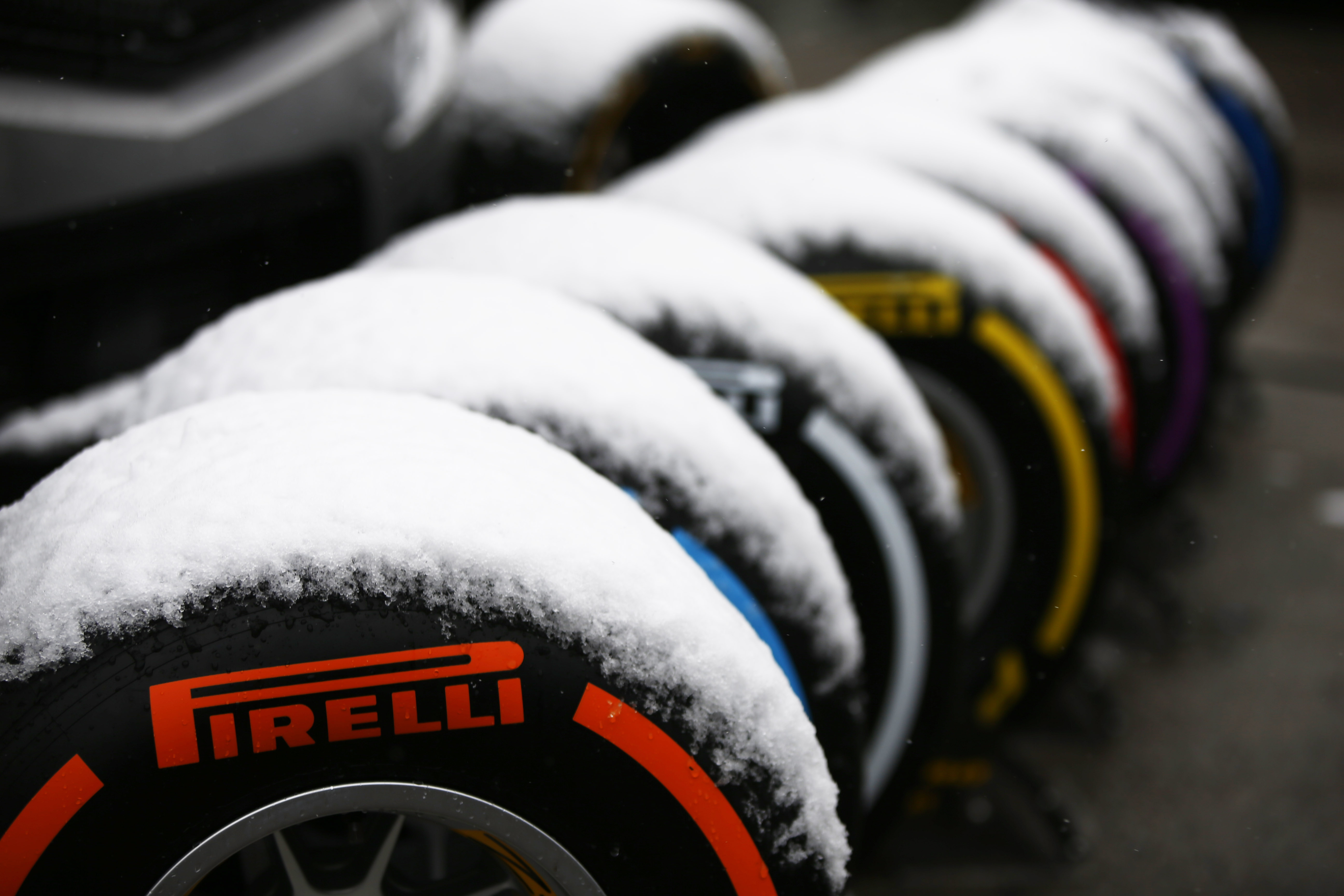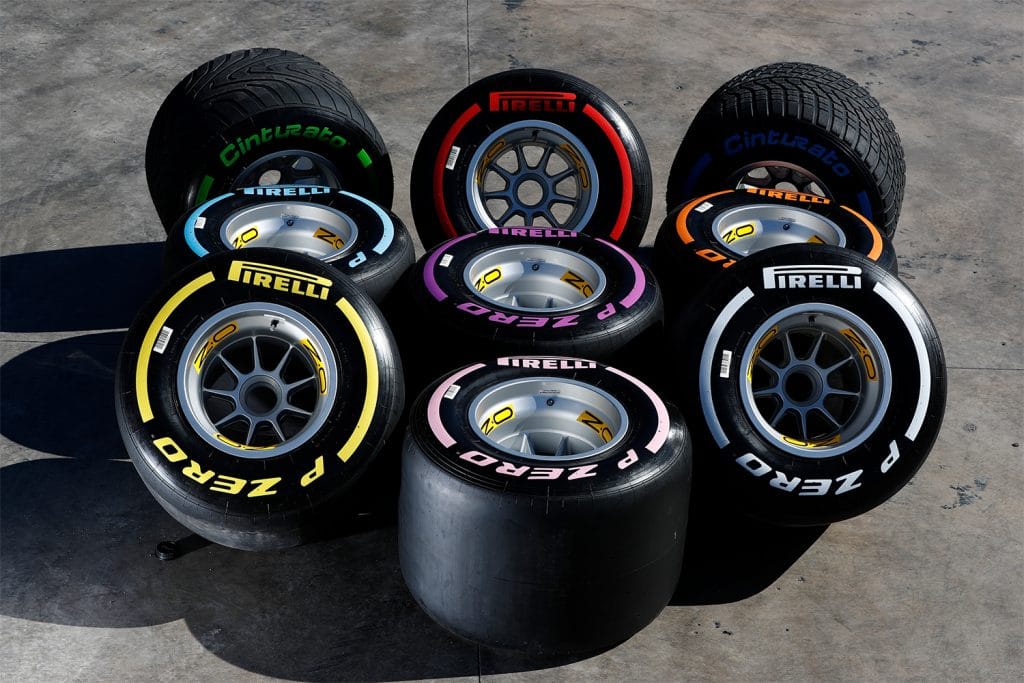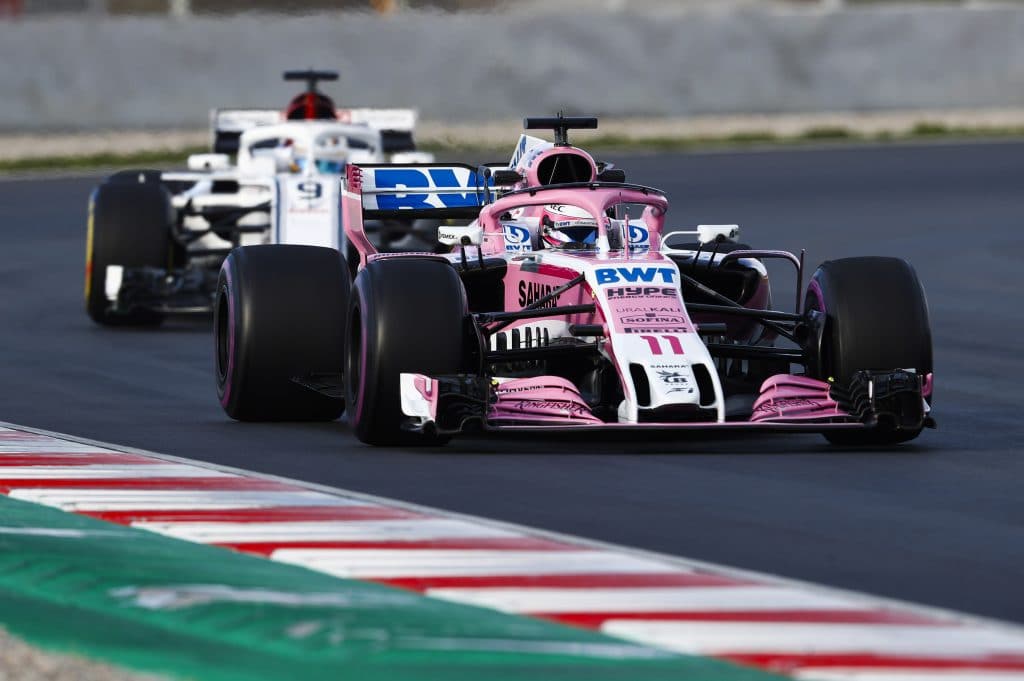
F1 2018 Preview: Tyre Talk
Tyres, tyres, tyres. It’s something that’s been talked about more and more over the last decade in Formula 1. 2018 is no different and fans have already been criticising Pirelli, even before the season has started. New tyre compounds and new tyre structures have been brought in for the upcoming season with the intention of adding more strategy and making a wider operating range for all of the tyre compounds.

There are seven dry tyre compounds, plus the intermediate and wet tyres for 2018. This is what they are.
Superhard – Orange
Hard – Blue
Medium – White
Soft – Yellow
Supersoft – Red
Ultrasoft – Purple
Hypersoft – Pink
Intermediate – Green
Wet – Blue
This is far too many and is, in my view, completely unnecessary. You shouldn’t need 7 different tyre compounds to make good strategies for all of the races. It suggests that Pirelli are struggling to make the tyres work and are going very conservative by adding unneeded tyres and that they don’t believe that they are getting their tyres to work how they want them to. But then, from what we have seen so far in testing, nobody has even touched the hard or superhard tyres and I don’t think they will be used at all in the season. Spain was the only race last year were the leaders had to make 2 pitstops to get to the end at the fastest possible pace, therefore meaning, in theory, that the Circuit De Catalunya is the hardest track on the whole calendar on tyres. The tyres have already been decided for that race and the hard or superhard have not been chosen.
Now, I know that the track has been resurfaced but the long, fast corners which punish the front tyres and the slow final sector which punishes the rears, all mean that the Spanish circuit will still hurt the tyres. If the hard and superhard tyres are not used, then why don’t Pirelli restructure the system because it’s very confusing as to what’s the softest tyre compound to us F1 fans, never mind the casual viewers or new fans.
This is what I would do:
Hard – Orange
Medium – White
Soft – Yellow
Supersoft – Red
Basically, go back to the 2011-2015 tyre line-up. At the absolute maximum, there should be 5 dry tyre compounds but it really shouldn’t be needed. Like I said, the more tyre compounds you have, the less you’re trusting the tyres you make which means that you don’t have faith in the tyres that you’re making. If Pirelli don’t trust themselves, how do you expect the fans to trust them?

That said, you can’t put all of the blame on Pirelli. In 2011/12 fans complained that the tyres degraded too much and were “cheesy”. People said “Pirelli can’t make a tyre that can last more than 20 laps, they’re so bad” and then the 2013 British Grand Prix saw tyre blowouts galore (admittedly due to belt construction) only caused fans to complain even more. From then on, Pirelli have been much more conservative and we saw less tyre wear in the races following that event.
Currently, the tyres have very little degradation and last year, we saw nearly every race being completed with relative ease on 1 stop. People complained that there wasn’t enough strategy and the 1 stop races were boring. Well make your mind up! Do you want high degradation or low degradation tyres? 2016 saw something in between and I thought that, that was okay. The clear problem here, is that fans want different things which is a problem in the wider world of Formula One. Some people want refuelling to return, some people are in favour of gimmicks like DRS and KERS, some people think that sound of the cars should be a priority. Whatever you think everyone else wants, is highly likely to be wrong (confusing I know) but to put simply, everyone thinks differently and everyone has different ideas. This is why Pirelli always get criticism because no matter what they do, they will have people who will be against what they have done. They can’t win in any situation.
It should be up to Formula One and Liberty Media to decide if we should go back to the 2011/12 tyres. Personally, I am totally in favour of those tyres. The races were entertaining, midfield teams could get in amongst the podium with a different strategy if they didn’t get into Q3, the racing was exceptional (for F1 standards) and it made for a lot of overtaking because of the difference in tyre wear between cars. The people against this will say that drivers weren’t pushing as hard as they could and were nursing their tyres home. Well, drivers still aren’t pushing at their absolute maximum now, due to the V6 engine that we are stuck with until 2021. They will also say that overtaking was too easy. Can overtaking be easy and can you blame the tyres. This is a DRS “problem”. The difference in the tyre compounds did make overtaking easier but I would much rather have a season with nearly 1000 overtakes rather than a season like last year were there was only 435.
You may be thinking that the cars have changed and the better racing back then was thanks to close competition and was a completely different era. But, the tyres play a massively important part as to how good the racing is, in my opinion. If we had the 2011 tyres in the years between 2014-2017, I think we would have seen more surprising result and Mercedes wouldn’t have dominated as much. Why I here you ask? In 2013 (the year prior to their dominance) they were the worst team when it came to tyre conservation and there are a few glimpses of that being the case for the upcoming season. If they carried that over into 2014, no matter how fast they were, they may well have lost a few races thanks to bad tyre wear. Just my thoughts and it could be completely wrong and who knows they may well have sorted out their problems.
Anyway, I’m just another person who’s on the bandwagon for better racing consistently across the season by having high degradation tyres.
A problem that Pirelli have had which has nothing to do with the fans is getting a wide operating window for the tyres. At the moment, some of the compounds have a very narrow operating window which means that they can lose a lot of time and go completely the wrong way thanks to the tyres alone. This shouldn’t be the case because it sometimes means that the soft tyre is faster than the supersoft tyre, which is just wrong or else what’s the point in having a “softer” tyre if it’s slower than a harder tyre. Pirelli need to sort this out because it’s only been a problem that’s occurred in the last few years and it wasn’t really a problem in the early era of the Italian tyre manufacturer. Another reason to go back to those “cheesy tyres”.

From what we have seen from testing, there’s very little difference as you go through the tyre range. Around 0.2-0.4 difference as you get a step softer from each tyres. It’s really not enough, there should be AT LEAST 0.6 of a second between each compound, otherwise what’s the point in having new compounds if you won’t go much faster? Also, why can the tyres all last at least 50% racing distance if some of them are meant to be very soft. This is all from last year of course and Pirelli say that they have made each compound a step softer from 2017 as well as making more 2 and 3 stop races but from testing, very little drop off from the soft and medium tyres were seen so are we going to see little change and more 1 stop races.
I hope Pirelli can do what they intend to do because the potential to mix things up in the races with the structure of the tyres is there. The 3 dry tyre compounds rule that was introduced in 2016 has worked well and that is one of the best things that has been put in place. It was really quite pointless last season though as the hardest of the 3 tyres at a particular race was hardly used. I’m hopeful that we will see a mix of tyres on track again which will create more opportunities for overtaking.
Away from the dry tyres now, and onto the intermediates and wets. Drivers have complained that not enough grip has been produced from these tyres, especially the wets. The wet tyre has almost be useless in the last few years with the intermediate coping quite well in the worst of the weather. We have seen drivers pit as soon as possible for the inters just after a red flag or safety car were the whole field is on wets. It just shows that the wet tyre doesn’t work and the operating window is very narrow for that compound as well.
In qualifying for the Italian GP last year, the teams and drivers just didn’t know if the intermediate or wet tyre was faster. That’s because of the narrow window for the wet tyre which caused teams to go onto the inters despite the torrential rain. Very early weather forecasts suggest that, rain will be on the cards on Saturday or Sunday so we will be able to see if the drivers are happy with the non-dry compounds as well as the dry tyres.
That said, if it’s the grip that the drivers are complaining about, then isn’t it part of their job to drive around that problem and slide there way around the lap. It’s wet for a reason; of course there’s going to be less grip because it’s wet! Anyway, it is what it is and at some point in the season we will see the drivers feedback on the inters and wets after changes that Pirelli have made over the last 12 months.
That’s enough tyre talk for now! I really don’t like to talk about it too much (over 1600 words later!) because it just becomes a topic that will eventually become drained and just goes round in circles (apologies for the unintentional pun) as Formula 1 struggles to decide where to go in the future. Blame Pirelli as much as you want, but it’s the people at the top who ultimately make the bug decisions and if they want a better show, then I suggest we go back to the era of high degradation but more side by side action.
For those counting, the word tyre or tyres has appeared 67 times in this article. I promise to never go into this much detail for at least a few months!
Stay tuned for a full preview of the 69th FIA Formula One Championship in a couple of days!



![Private: [ID: 71rYi-xncgM] Youtube Automatic](https://motorradio-xijqc.projectbeta.co.uk/wp-content/uploads/2024/08/private-id-71ryi-xncgm-youtube-a-1-360x203.jpg)
![Private: [ID: 1SfHxvC8Doo] Youtube Automatic](https://motorradio-xijqc.projectbeta.co.uk/wp-content/uploads/2024/07/private-id-1sfhxvc8doo-youtube-a-1.jpg)
![Private: [ID: H6XRkf6kROQ] Youtube Automatic](https://motorradio-xijqc.projectbeta.co.uk/wp-content/uploads/2024/07/private-id-h6xrkf6kroq-youtube-a-1-360x203.jpg)
![Private: [ID: Kb6w-qAmKls] Youtube Automatic](https://motorradio-xijqc.projectbeta.co.uk/wp-content/uploads/2023/12/private-id-kb6w-qamkls-youtube-a-360x203.jpg)
![Private: [ID: CcpwYw20k3k] Youtube Automatic](https://motorradio-xijqc.projectbeta.co.uk/wp-content/uploads/2024/07/private-id-ccpwyw20k3k-youtube-a-360x203.jpg)

![[ID: x1SiRC5jhW4] Youtube Automatic](https://motorradio-xijqc.projectbeta.co.uk/wp-content/uploads/2022/04/id-x1sirc5jhw4-youtube-automatic-360x203.jpg)
![[ID: lMZ8lAeLubk] Youtube Automatic](https://motorradio-xijqc.projectbeta.co.uk/wp-content/uploads/2022/04/id-lmz8laelubk-youtube-automatic-360x203.jpg)
![[ID: GAYCcnqyFo4] Youtube Automatic](https://motorradio-xijqc.projectbeta.co.uk/wp-content/uploads/2022/04/id-gayccnqyfo4-youtube-automatic-360x203.jpg)
![[ID: Gg142H296QY] Youtube Automatic](https://motorradio-xijqc.projectbeta.co.uk/wp-content/uploads/2022/04/id-gg142h296qy-youtube-automatic-360x203.jpg)





